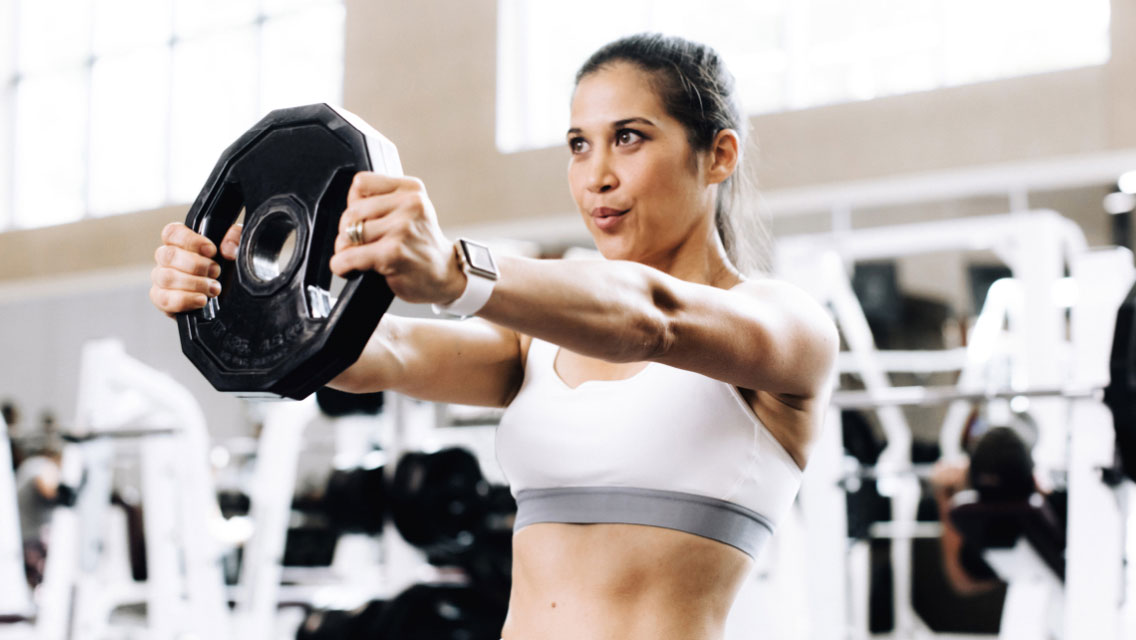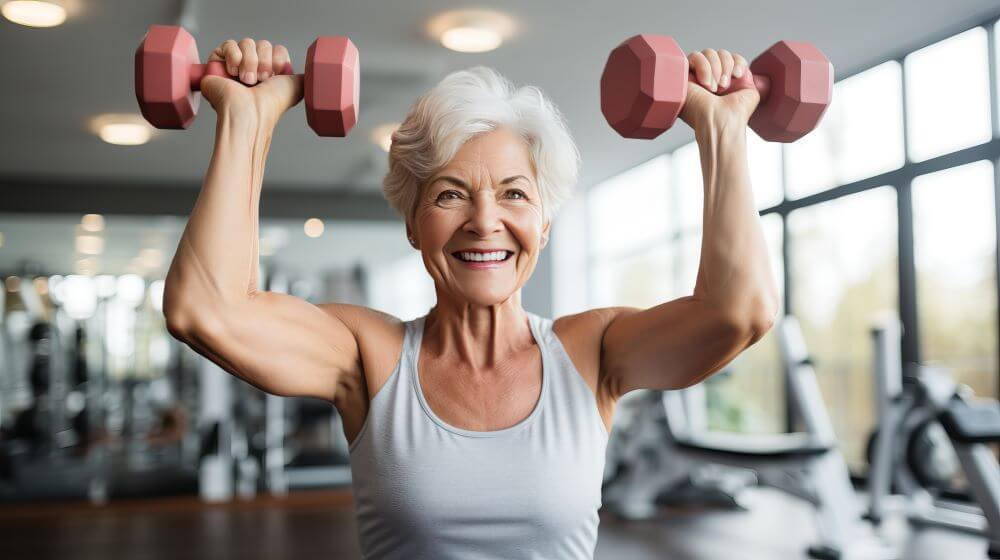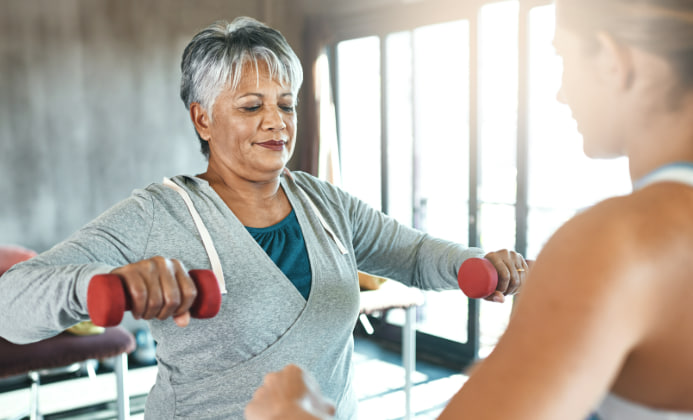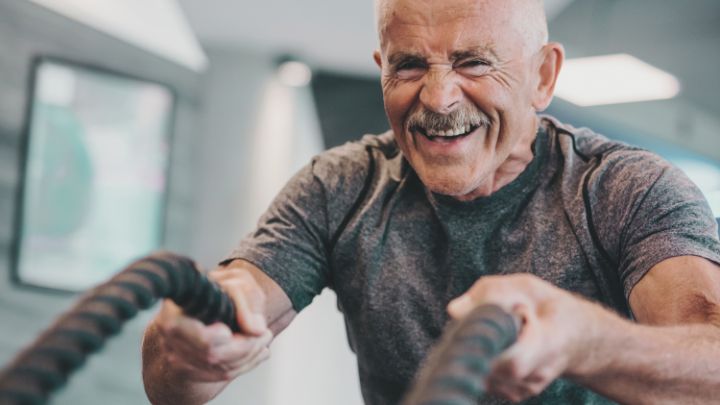Why Building Muscle After 50 May Be the Best Investment in Your Health
Feeling strong after 50 is about so much more than appearance — it’s about independence, vitality, and living life fully. As women age, maintaining muscle mass becomes one of the most powerful ways to support long-term health, protect joints, and preserve mobility.
Starting around age 30, the body naturally begins to lose lean muscle mass — a process known as sarcopenia. On average, adults lose about 3–5% of muscle every decade. For women, hormonal shifts during perimenopause and menopause can accelerate that loss, leading to slower metabolism, fatigue, and a greater risk of injury. The good news? With intentional resistance training and the right nutrition, you can rebuild and even improve your strength at any age.

Why Muscle Is Your Fountain of Youth
Muscle is more than strength — it’s protection. Studies have shown that maintaining lean muscle supports bone density, balance, metabolic health, and even immune function. For women over 50, regular strength training not only enhances appearance but also helps lower the risk of chronic conditions like diabetes, osteoporosis, heart disease, and arthritis.
Muscle tissue is metabolically active, meaning it helps burn calories even at rest. This makes it easier to manage body weight and keep blood sugar stable. Beyond physical benefits, strength training can also improve mood, reduce stress, and boost self-confidence — creating a ripple effect on overall well-being.

How to Build Muscle After 50: A Practical Plan
Fitness experts agree that building muscle later in life requires a smarter, more intentional approach. Your body may recover more slowly than it did in your 20s or 30s, so consistency and technique matter more than intensity.
1. Prioritize Strength Training
Aim for two to three resistance training sessions per week, focusing on major muscle groups — legs, back, chest, shoulders, and core. Exercises such as squats, rows, push-ups, and deadlifts are great full-body movements that improve strength and coordination.
To build muscle, target 6–12 repetitions per set for 3–4 sets, resting about a minute between sets. Start with light to moderate weights and gradually increase resistance as you become more comfortable with form.
Sample Weekly Plan:
-
Day 1: Full-body workout (legs, back, core)
-
Day 2: Active recovery (walking, yoga, or swimming)
-
Day 3: Strength training (arms, shoulders, chest)
-
Day 4: Rest or gentle stretching
-
Day 5: Full-body workout (focus on glutes and posture)
-
Day 6–7: Rest and light movement
Warm Up and Cool Down: Non-Negotiables
As the body ages, flexibility and joint mobility decrease — making warmups and cooldowns crucial for safe training. Spend 10–15 minutes warming up before lifting weights with light cardio, dynamic stretching, or mobility exercises like arm circles and bodyweight squats.
Cooling down helps the body return to its resting state and minimizes soreness. Gentle stretching, foam rolling, or a short walk after workouts improves recovery and flexibility. Think of it as giving your muscles a well-deserved thank-you.
Learn Form Before Adding Weight
Proper form is everything. Lifting weights incorrectly can cause strain and reduce the effectiveness of your workout. If you’re new to strength training, start with bodyweight exercises like lunges, planks, or wall push-ups to master alignment and control.
Consider booking a few sessions with a certified trainer to build confidence and ensure your technique is correct. Even a short virtual session can help you understand which exercises are safest and most beneficial for your specific fitness level.

Don’t Forget Flexibility and Mobility
Flexibility is often overlooked, but it becomes increasingly important after 50. Regular stretching helps keep joints healthy and prevents stiffness, making daily activities — like bending, lifting, or reaching — easier and more comfortable.
Incorporate dynamic stretches (moving stretches like leg swings or torso twists) before workouts and static stretches (holding positions) afterward. Spending at least 10 minutes a day on flexibility can improve posture, balance, and recovery.
The Power of Mindset: Train for Strength, Not Punishment
A major mindset shift happens when women start viewing exercise as an act of self-care, not self-criticism. Movement should be a way to celebrate what your body can do — not to “burn off” food or chase perfection.
Building muscle after 50 is about freedom — the ability to move confidently, travel, garden, play with grandchildren, or simply enjoy life without physical limitations. Focusing on progress, not perfection, builds motivation and mental resilience that lasts.

Nutrition: The Missing Piece of the Puzzle
You can’t out-train poor nutrition. For muscle growth, protein is essential. It provides the building blocks (amino acids) your muscles need to repair and grow after workouts.
Most experts recommend that women over 50 aim for 25–30 grams of protein per meal, spread evenly throughout the day. Lean meats, eggs, Greek yogurt, tofu, lentils, and beans are excellent sources.
Pairing protein with complex carbohydrates (like whole grains or sweet potatoes) and healthy fats (from avocados, olive oil, or nuts) supports sustained energy and joint health. Hydration also plays a key role — muscles function best when the body is well-hydrated.
Strong at Any Age
The beauty of strength training is that it’s never too late to start. Whether you’re picking up weights for the first time or returning after a break, every small effort adds up. With proper guidance, patience, and self-compassion, women over 50 can build a body that’s not just strong — but resilient, capable, and full of life.
Muscle may not be a magic fountain of youth, but it’s the closest thing science has found. And perhaps the greatest reward isn’t just the physical transformation — it’s the renewed sense of confidence that comes with knowing you’re taking charge of your health, one workout at a time.



